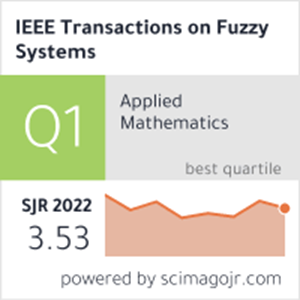基于CLIP先验的自适应模糊退化感知一体化图像恢复
IF 10.7
1区 计算机科学
Q1 COMPUTER SCIENCE, ARTIFICIAL INTELLIGENCE
引用次数: 0
摘要
本文章由计算机程序翻译,如有差异,请以英文原文为准。
Adaptive Fuzzy Degradation Perception Based on CLIP Prior for All-in-One Image Restoration
Despite substantial progress, the existing all-in-one image restoration methods still lack the ability to adaptively sense and accurately represent degradation information, thus hindering the enhancement of restoration performance. In addition, due to the large uncertainty and fuzziness of the data distribution in real scenarios compared to the training data, the model's generalization ability is often limited. To address the above issues, we propose a novel adaptive fuzzy degradation perception approach based on fuzzy theory that includes two tactics: 1) Fuzzy Degradation Perceiver (FDP); and 2) Test-time Self-supervised Prompt Fine-tuning (TSPF). On the one hand, we introduce the FDP, which leverages the rich visual language prior knowledge in CLIP to learn the prompt representations of different degradations. These prompts are regarded as semantic representations of various degradation fuzzy sets, achieving adaptive degradation perception by computing the degrees of membership between input images and the fuzzy sets. On the other hand, we propose the TSPF strategy, which is capable of self-supervised optimization of degraded fuzzy sets according to real-world scenarios during testing. This strategy improves the model's ability to perceive and represent the degraded information in data with real-world distributions. Thanks to the above key strategies, our method significantly improves degradation perception capability and image restoration quality while exhibiting excellent generalization in complex real-world scenarios. Extensive experiments on multiple benchmark datasets confirm that our approach achieves state-of-the-art performance in all-in-one image restoration.
求助全文
通过发布文献求助,成功后即可免费获取论文全文。
去求助
来源期刊

IEEE Transactions on Fuzzy Systems
工程技术-工程:电子与电气
CiteScore
20.50
自引率
13.40%
发文量
517
审稿时长
3.0 months
期刊介绍:
The IEEE Transactions on Fuzzy Systems is a scholarly journal that focuses on the theory, design, and application of fuzzy systems. It aims to publish high-quality technical papers that contribute significant technical knowledge and exploratory developments in the field of fuzzy systems. The journal particularly emphasizes engineering systems and scientific applications. In addition to research articles, the Transactions also includes a letters section featuring current information, comments, and rebuttals related to published papers.
 求助内容:
求助内容: 应助结果提醒方式:
应助结果提醒方式:


